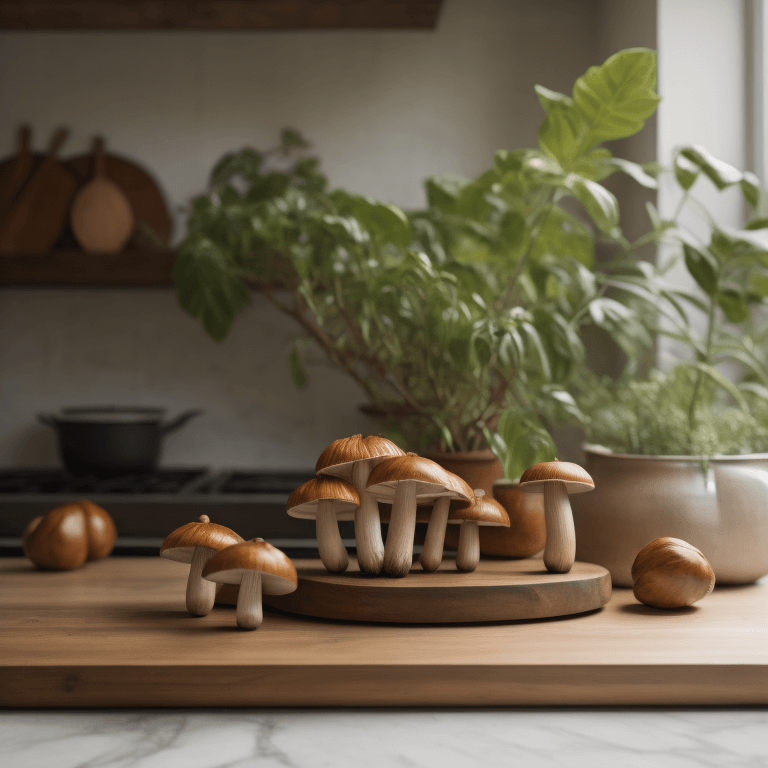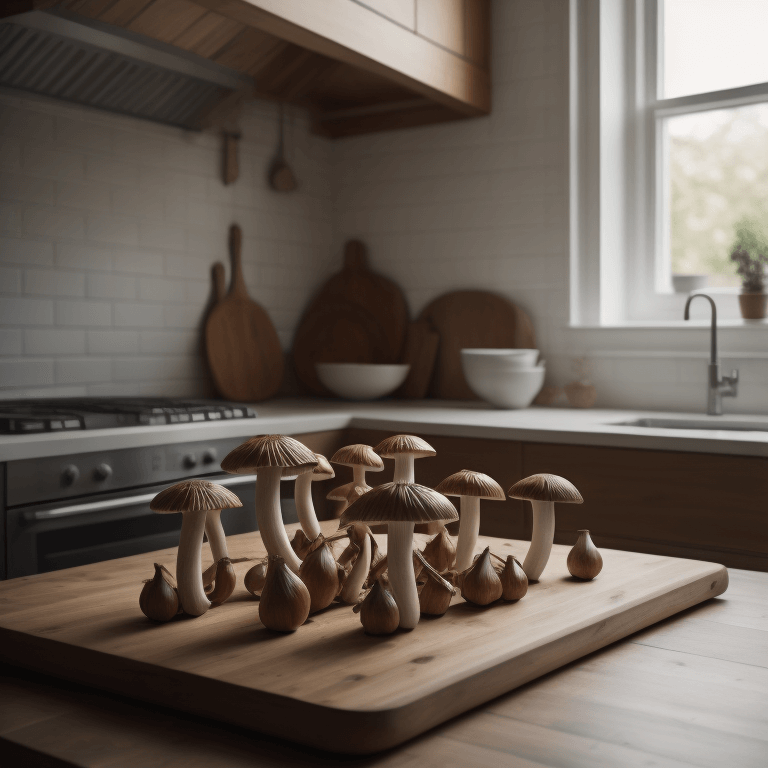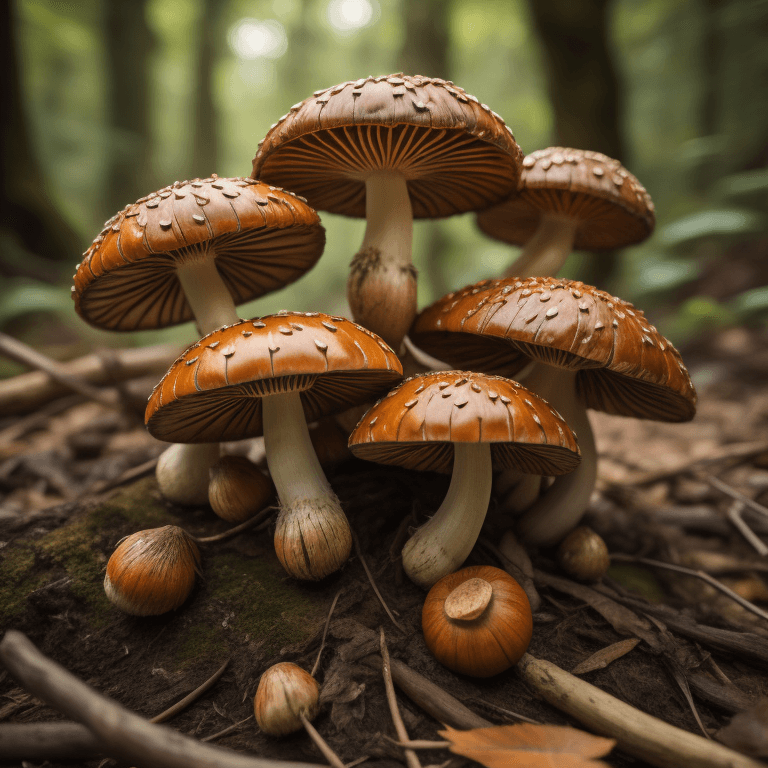Chestnut mushrooms are a type of wild mushroom found throughout the United States.
Chestnut Mushrooms have a nutty, earthy flavor and are often used in recipes that call for mushrooms.
Chestnut mushrooms are also high in nutrients, making them a healthy addition to your diet.
In this blog post, we will discuss the nutritional benefits of chestnut mushrooms and provide some recipes you can try using these delicious fungi!
Chestnut mushrooms (Agaricus bisporus) are a popular variety of mushrooms that has a distinct nutty flavor and aroma.

They are an edible species of the Agaricus genus, in the same family as portabello, shiitake, and cinnamon cap mushrooms.
Chestnut mushrooms are typically found in woods or damp meadows with plenty of sunlight.
What are chestnut mushrooms?
Chestnut mushrooms are a type of edible mushroom in the Agaricus genus.
Explain to it a child
Chestnut mushrooms are a type of mushroom that is very popular. They have a nutty flavor and aroma that makes them stand out.
They grow wild throughout parts of Europe, North and South America, and Japan.
Unlike other varieties of mushrooms, chestnut mushrooms have a reddish-brown hue that creates an attractive contrast to other types of fungi found in the wild.

Although they are edible, chestnut mushrooms can be quite tough compared to more typical white mushrooms.
As such, they’re best cooked before being consumed as they taste great when added to soups and sauces or roasted with herbs and garlic.
What do chestnut mushrooms taste like?
Chestnut mushrooms have a unique flavor that is hard to replicate but is far from unpleasant.
- People say they are earthy and nutty, with slightly sweet overtones. Sometimes there are bits of meat to them, compared to other mushrooms, due to their different texture.
- Their distinct taste gives a depth of flavor to any dish they’re added to and results in something truly memorable.
- People who enjoy chestnuts tend to like the taste of chestnut mushrooms, however, this doesn’t hold true for everyone as all pallets differ!
How to cook chestnut mushrooms?
Chestnut mushrooms are a delicious ingredient that can bring a lot of flavor to any dish. To cook them correctly, you will need the right preparation and understanding of how the mushroom should look.

- First, trim off the base of the stalk and cut away any tough or discolored areas from around the crown.
- Next, lightly wipe down each side of the chestnut mushrooms with a damp cloth as this will remove any dirt or residue stuck on its exterior.
- Then, use butter in either a pan or an oven-proof dish and add some herbs for extra flavor.
- Finally, add your chestnut mushrooms to the dish and allow them to cook for approximately 8 minutes until their centers are tender.
Where and when do chestnut mushrooms grow?
The chestnut mushroom is a delicious fungus, prized for its nutty flavor by many cooks.
Where and when do these tasty morsels grow? Well, they are typically found in deciduous woods from late August to November across much of North America and Europe making autumn the perfect season to harvest them.

Chestnut mushrooms can be identified by their funnel-shaped cap with white gills which turn browner as the mushroom matures.
They prefer to grow on dead wood or elder, but can also appear ground-dwelling in mossy areas.
The best way to enjoy them is simply cooked up with garlic and butter however you choose, these mushrooms deliver a hearty flavor whether you forage for them in the woods or pick some up at the local grocery store.
How to grow chestnut mushrooms by yourself?
Growing chestnut mushrooms can seem like a daunting task, but with a little research and dedication, it’s manageable for any individual farmer!
The first step is to purchase chestnut mushroom spawn from an online or local purveyor.
When the spores arrive, find a suitable area in your garden that has regular rain and good soil drainage.
You’ll also need to build an elevated bed for the mushrooms, either out of wooden boards or old pallets, depending on the size of your crop.
Once the bed is prepared and filled with nutrient-rich compost, spread the spores evenly across the top of it.
Water regularly thereafter and watch as your hard work begins to pay off in a matter of weeks lush, juicy chestnut mushrooms will sprout out of the ground filled with deliciousness!
How to preserve chestnut mushrooms?
To preserve them for longer-term storage, the best strategy is to gently dehydrate them.
- As this process preserves all the original flavor of the mushrooms and requires only a few supplies and ingredients, it’s ideal for home use.
- To begin, rinse the chestnut mushrooms off with cold water and pat them dry with paper towels.
Then slice down the middle and lay out on a lightly oiled baking sheet before placing in an oven at low heat – around 95°F or 35°C – for several hours until nice and crispy.
Once complete, store your preserved chestnut mushrooms either in an airtight container or vacuum-sealed bag and they’ll keep for months!
What are the health benefits of Chestnut Mushrooms?
Chestnut Mushrooms have many health benefits that make them an optimal choice as a food source. Chestnut Mushrooms are known to be very good for heart health as they are low in fat, high in fiber, and contain cholesterol-lowering compounds.
They can also help control blood sugar levels due to their complex carbs.
Additionally, Chestnut Mushrooms contain some unique antioxidant and anti-inflammatory properties which can help lower the risk of developing certain cancers and reduce inflammation in the body.
The vitamins, minerals, and other nutrients found in Chestnut Mushrooms make them a great choice for overall health and well-being.
In conclusion, Chestnut Mushrooms provide great taste but also many essential nutrients as well as medicinal qualities that research has begun looking into more deeply throughout the years since their discovery in North America.
Article Sources
Jacks of Science sources the most authoritative, trustworthy, and highly recognized institutions for our article research. Learn more about our Editorial Teams process and diligence in verifying the accuracy of every article we publish.
